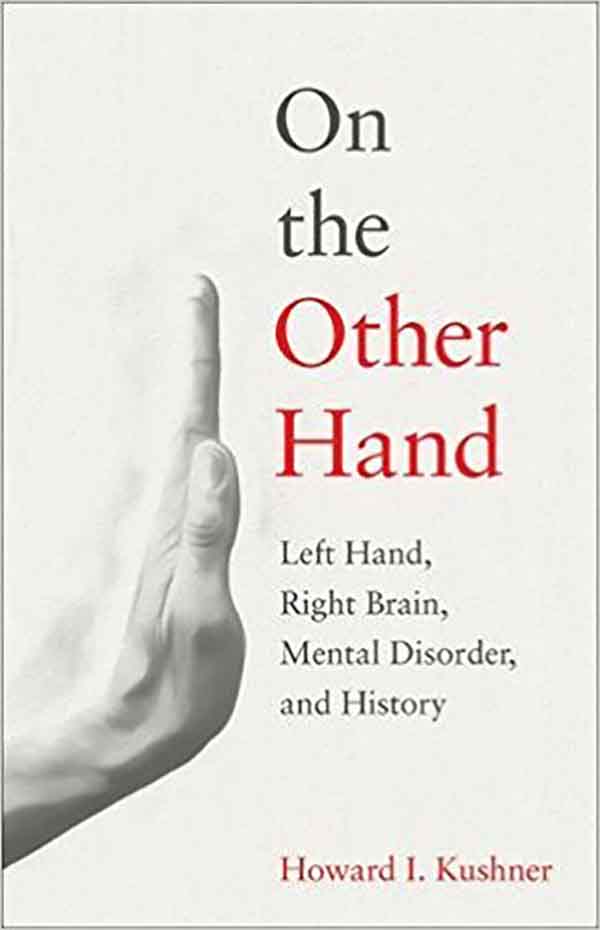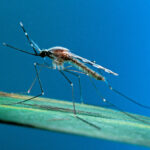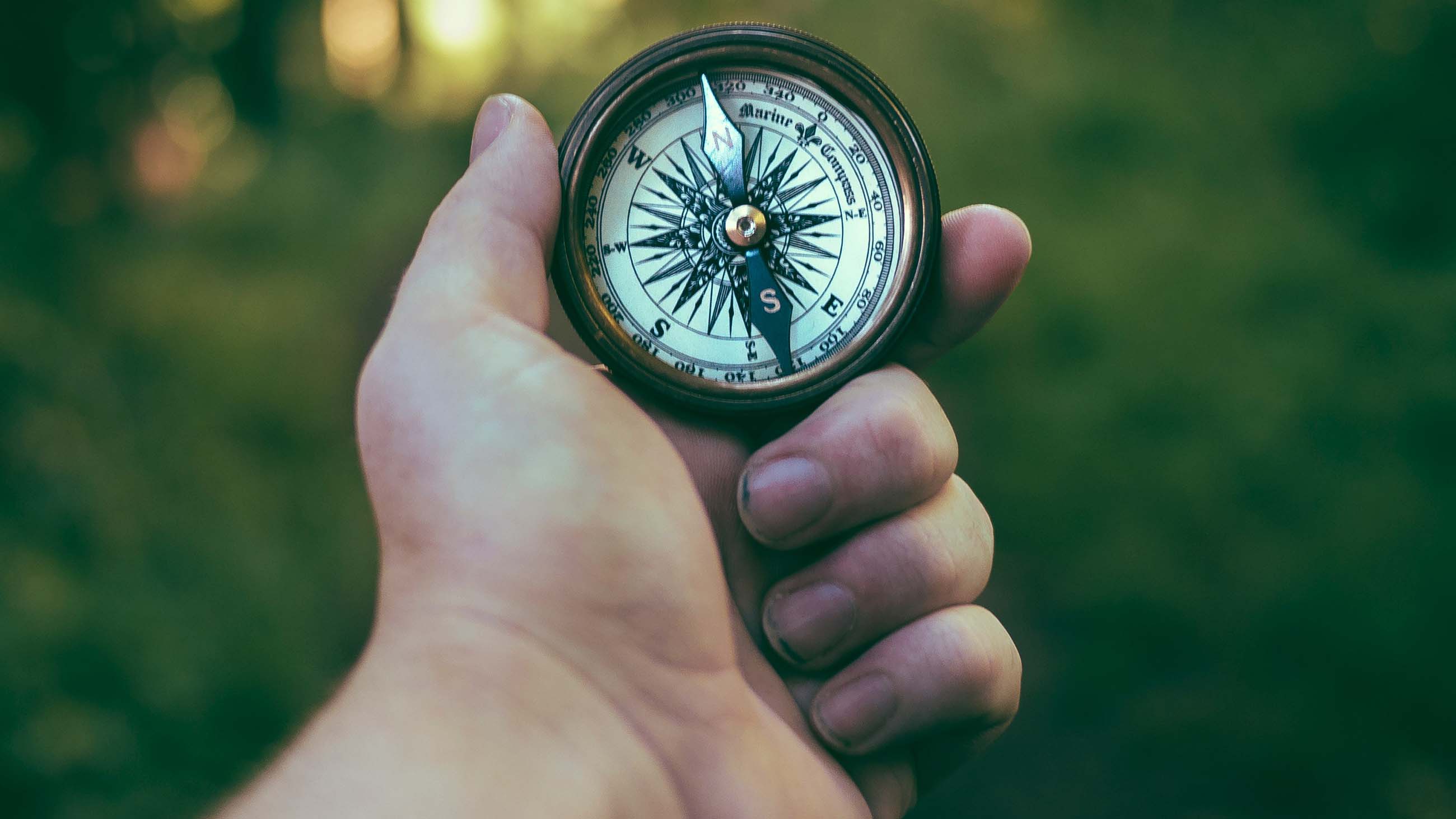All human beings contain a frightening tangle of primal impulses struggling for dominance, and that’s true not only for the chaotic psyche, but also the sober, dependable, symmetric old hands. Even the ordinary act of reaching for a fork or throwing a ball is the product of immensely complex genetic and neurologic negotiation.

BOOK REVIEW — “On the Other Hand: Left Hand, Right Brain, Mental Disorder, and History,” by Howard I. Kushner (Johns Hopkins, 192 pages).
For all its sophistication, modern science is still unable to explain exactly why some of us prefer to do these tasks with the left hand and some with the right. Many theories are proposed and debated; studies yield data invariably suggestive but never conclusive. Moreover, as Howard Kushner systematically outlines in his short but meaty survey of the science and sociology of handedness, in some ways we are not that much further along than we were back in the days when our ancestors linked left-handedness to the sinister and the gauche, among many other undesirable traits, and just left it at that.
An emeritus professor at Emory University and San Diego State, as well as a visiting scholar at the University of California – San Diego, Kushner brings academic credentials in both neuroscience and the history of science to his overview. In addition, he himself is left-handed, as was his mother (who like many left-handed children of her era was forcibly retrained to use her right), and the residua of personal experience echo through the book.
Cultures all over the world have found left-handedness an easy way to distinguish the aberrant from the putatively normal, metaphor made conveniently visible. As a late-19th-century description of Maori worldviews put it, “a left hand that is too gifted and agile is a sign of a nature contrary to the right order, or a perverse or devilish disposition: Every left-handed person is a possible sorcerer, justly to be distrusted.”
Such conclusions were pervasive around the world, in developing and developed cultures alike, right up to the pronouncement of an American psychiatrist in 1946 that “sinistrality,” much like “contrariety in feeding and elimination,” was “nothing more than an expression of infantile negativism.” A few thinkers, Plato and Lao Tse among them, spoke up for left-handers, but such broadmindedness was uncommon: Not for nothing did Islamic scholars specify that both Allah’s hands are right hands.
To retrain a recalcitrant left-handed child at the turn of the 20th century, the Zulus immersed the hand in boiling water. Decades later, mainland China was re-educating its young so efficiently that by the 1980s, barely any left-handed Chinese adults could be found. The stammering King George VI of England was forced to eat and write with his right hand, but was allowed to play tennis with his left. Kushner’s mother was forced by Philadelphia’s public schools in the 1930s to both write and sew with her right hand. By the time her son came along, such re-education had become obsolete, at least in the enlightened New York public schools of the 1950s.
In many ways, Kushner suggests, the history of left-handedness parallels that of many disabilities. Damage from discrimination can be greater than any damage from the condition itself, while tolerance “serves as a barometer of wider cultural toleration and permissiveness.”
Meanwhile, explaining the science of handedness has long been stymied by definitions and methodology. Acceptable answers to the big questions require clear answers to the little ones, many of which remain perversely unanswerable.
How many left-handers are there? That depends on how you define handedness. (Is it the hand you write with? The one you sew or play tennis with?) When should the diagnosis be made — in utero, by observing which thumb the fetus sucks? Or after socialization by mother, teacher, peers? What about the ambidextrous, who may not care much which hand they use? Are they de facto left-handers, or just “non-right-handers”?
With these caveats, an estimated 10 percent of most human populations since the Stone Age have been considered left-handed, although the numbers in specific surveys have ranged from 0.06 percent to 25 percent, with the highest rates in the United States and Europe, and the lowest in China and Africa. Males always predominate.
Which side of the brain controls speech and language in left-handers? That’s a trick question: Usually, as in most (but not all) right-handers, the left side dominates. A study using functional brain imaging found that 18 percent of left-handers and 5 percent of right-handers were right-brained for language — although experts now caution that assuming one hemisphere controls all language tasks is overly simplistic.
Given this caution, does forcing a lefty to write like a righty really lead to language problems — stuttering, dyslexia, and the like — as has been widely assumed? The question is impossible to answer with today’s gold-standard randomized, controlled studies, and the voluminous observational data from the past is inconclusive. Even so, some case series have convincingly described stutterers who were cured when allowed to use their left hands.
The biological root cause of left-handedness remains unidentified. One theory popular in the 1980s posited that “stress” during pregnancy exposed the fetus to excessive testosterone, which then thwarted standard left-brain development and right-hand dominance. Most newer theories have struggled to incorporate the clear genetic components of handedness into a viable scheme. Some posit a gene with two alleles, one favoring right-handedness and the other noncommittal for handedness. Others doubt a single gene is involved. Do the “mirror neurons” of “monkey see, monkey do” behavior contribute to a comprehensive theory of handedness and language arising from gesture? Research has suggested that a gene that plays a crucial role in establishing body asymmetry in animals plays a role in human handedness as well.
Somewhat to Kushner’s chagrin, modern researchers are avidly pursuing associations between left-handedness and autism, homosexuality, and schizophrenia, with compelling theories but, in Kushner’s assessment, weak supporting data. Once again, he notes, the left hand is serving as a visible metaphor for behavioral difference as it did back in what we like to consider less enlightened times. This scientific landscape in perpetual, cyclical flux is well described by Kushner’s engaging, accessible panorama.
Abigail Zuger is a physician in New York City and a longtime contributor to the science section of The New York Times.











Comments are automatically closed one year after article publication. Archived comments are below.
Dora the doll was created by a left handed person. With a category rating of 5 it would be 10 today. Do we agree. Share. Thank you.
Left-handed people have simply failed to evolve completely into ambidextrous people.
Your future overlords salute you – with both hands.
As a child, I was the only left-hander in my family, and amongst my friends. Poor handwriting, ink-stained hands, difficulty in finding a decent baseball glove, learning to deal with standard scissors, were the common problems. I really think that being left-handed forces one to be more creative, due to the need to find your own solutions to living in a right-handed world.
I shoot right in hockey, and golf. I trained myself to be a switch-hitter in baseball more control from the right side, but more power from the left. Write with my left hand. Computer mouse with my right hand! Started out playing guitar left-handed, but my first teacher switched me around right-handed. I keep meaning to buy a left-handed guitar to teach myself to play left-handed. I’m wondering if the style will be different. I just know it will be harder to find one. Maybe I should just order it online and be done with it.
Oddly enough when sitting for family dinners with my wife’s family, Left-handedness was well represented, with myself, my wife, brother in law, nephew, mother in law.
I don’t know the stats, but I would venture that left-handedness is partially responsible for the creativity of such famous people as Michaelangelo, Leonardo Da Vinci, Toulouse Lautrec, Escher, Chaplin, Jim Carrey, Fred Astaire, and Ginger Rogers. Some of the biggest names in Hollywood were left handed. The list of left-handed female actresses is literally a who’s who of actresses. Left-handedness isn’t necessary for creativity, but apparently, it is either very helpful or at least not a hindrance.
What I find different for us is RHers watching me work on something and telling me that it looks so awkward left-handed. Or RHers complaining when forced to undo my knots camping. Sitting at a dining table with a RH-er elbowing each other. Couriers handing you their signature pad, with the attached stylus on the right side. Some power tools have switches or features that are easier to use for righties. It truly is like being a stranger in a strange land, but we either learn to adapt, or accept failure. I choose adaptation.
Albert “Lefty” R.
I believe there is a creative tendancy with most lefties, perhaps due to having to think differently or because of the left/right brain thing.
My own preference in general is to use left for precision (EG writing) and right for gross tasks (EG throwing)
I find I use up to a 2″ paintbrush with left and switch to my right above that.
I play guitar normally because I’m a lead player and the left does the precision mostly anyway.
I thank one teacher who let me choose although it was common to force right handedness in the 50s
You are hilarious, Shannon! ?
A Vietnamese cook once told me that he was not allowed to hold his chopsticks in his left hand because “it could poke his sisters eye out” when they sat around the communal platter.
Dear Dr. Zuger,
I promise this is my last post and I hope you take it in the genuine jovial spirit it is intended, but I’ll bet that there is scientific evidence that proves that lefties that blog about how special they are, are terrible lovers.
Hope I gave you a chuckle!
Sincerely,
Shannon
I’m sure this comment won’t make it through moderation. It will be deamed as vulgar but it’s not. The reason I stay off off these sites is because it’s people masturbating to the sound of their own words.
I’m sorry!!! Happy New Year from the decidedly left! ?
Too much wine and my brother asked why I was the only leftie in our family… led me to this site. Much love.
This is so unlike me to comment on any discussion, but how about how productive it is that lefties that have likely adapted to right handed mouse controls can still write with their hand while they work on the computer?! Multi-task.
Oh, boo hoo, no scissors for me in school. I feel lucky regardless of the hand I use.
Although I am left handed, I think the whole “I have to sit at this seat at the table because of elbows” and “my hand always smudges the ink…” is such a silly cliche. We get it, I get it. You are special because you are left handed. From a lefty, “yawn”.
Being a “south paw” definitely had its challenges. Imagine trying to use left-handed scissors on a left-hand. Ugh, this used to drive me nuts! I was dynamite using right-handed scissors on my left hand. Yes, smearing my homework using an erasable pen or pencil was always happening too. I remember my parents telling me how they were forcing me to use my right hand as a baby and toddler though thankfully my pediatrician said, “let him be”. The only person who was left-handed iny family was my dad’s brother whom we hardly ever saw.
Here is my observation and viewpoint. People will habitually lean towards successful tendencies. Meaning at some point I must have had success using my left-hand from a ‘Nurture’ perspective. Maybe I got food, breast milk or formula the first time when using my left-hand and then stuck with it? My dad was right-handed and had a real old set of golf clubs. I learned to swing right-handed. I also shoot from the right side for hockey, and swing/bat right-handed as well. Everything else in my life is with my left hand.
One other observation. I am in the I.T. industry and would consider myself to be very analytical. When in meetings you would be amazed that there are considerably more left-handed people in I.T. I would easily say that that three or four out of 10 are lefties.
Anyways, thank you for reading my babble.
What Makes Some of Us Transgender? Hint: Nobody Knows.
We exist, same as left-handed people and it all has to do with the brain.
So true.
Hey other right brainers (hehehe). I have definitely felt like a different thinker in this world, but that could just be genetics as my Mother and Father fall on two opposite sides of the trait spectrum. And if you believe Horoscopes at all, and I am by no means a fanatic, but being a Gemini has definitely influenced the split personality. That said my grandmother passed the trait to my brother (1st born) and myself (the baby), it is no where else in a very large family, parents included. She was raised in the 30s and 40s in Catholic schools where her left have was chronical beat with rulers until she succumbed to God’s will and Satan was promptly removed from her, or at least her hand ;). According to my mother I spent much of my youth mocking my older brother who is the epitome of the thru left and this is why I am left handed. I myself attempted to start using my right hand in grade school hoping to eliminate the smeared lead on my papers and had while writing, unlike many I drag my hand across paper when writing. I embraced the keyboard and to this day avoid handwriting if possible as where my brother he always had beautiful handwriting, mine fell short. Though my efforts did yield ambidextria. I believe my mother to the extent that I perform several tasks comfortably as a right handed person, however I am most definitely left hand dominant and much like my counterparts have been proven to show a Lefties behaviors and way of thinking. So maybe Ambidextrious would be a more likely diagnosis. Anyhow, I can vouch that we are not of the ?, or least would like to believe that, and enjoy the strange attention that goes with being a lefty. We are different, and most that I know carry a certain charisma that I don’t see from as many right handed people. But for what it’s worth, I do wish I didn’t have to turn binders and spiral upside down in order write in them, it made carrying a journal difficult before the computer evolved. That’s my story, not that it did much to help your understanding, but I have most definitely experienced the intrigue that right handed people have with us, and my own with respect to the things Lefties were subjected to in earlier times.